In today’s fast-paced world, retail businesses need to constantly find ways to improve their operations to stay ahead of the competition. One way to achieve this is through the implementation of IoT-powered energy and asset management systems. These systems use sensors, connected devices, and other IoT technologies to automate and optimize various aspects of a retail building’s operation, such as lighting, ambient environment control, HVAC systems, refrigeration and more.
In this blog, we will explore the applications and benefits of IoT-powered energy and asset management in the retail industry. We will also look at some trends that demonstrate how these systems are being implemented in the retail sector.
By the end of this blog, you will have a better understanding of the potential that IoT-powered energy and asset management holds for improving the operational & energy efficiency, sustainability, and customer experience of retail buildings.
Table of Contents
ToggleWhat does IoT in the retail sector mean?
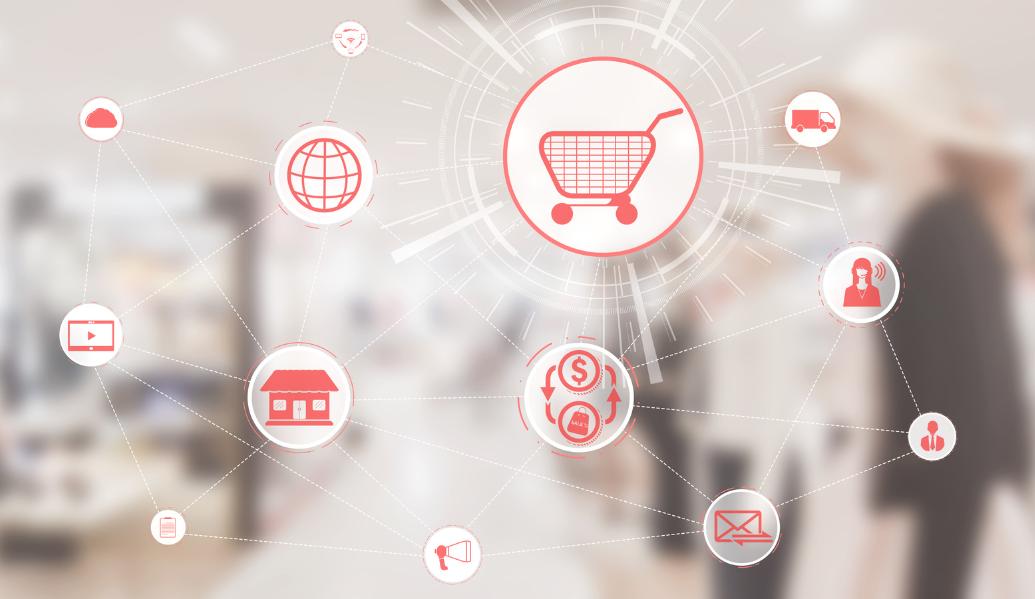
IoT-powered automation in the retail industry refers to the use of Internet of Things (IoT) technologies, such as sensors, connected devices, and data analytics, to automate and optimize various aspects of retail building operations. These systems leverage the power of IoT to collect and analyze data in real-time, allowing retailers to make more informed decisions and improve their business operations.
IoT-powered automation can be applied to a wide range of functions within a retail building, including lighting, ambient environment control, HVAC, refrigeration control, etc. By automating these functions, retailers can reduce energy consumption, optimize HVAC, improve electrical safety and security, and enhance the overall customer experience.
IoT-powered automation in the retail industry is a rapidly growing field, and as the technology continues to advance, we can expect to see even more innovative solutions that will further optimize the way retail buildings operate.
Applications of IoT in Retail
IoT technology is increasingly being adopted in the retail industry, especially in the form of IoT-powered energy and asset management to streamline operations and enhance customer experience.
In this section, we will delve into the applications of IoT-powered energy and asset management in the retail industry. We will explore how these systems are being used to improve energy efficiency, reduce costs, enhance electrical safety and improve the overall customer experience.
By examining these applications in detail, you will gain a better understanding of how IoT-powered energy and asset management is transforming the retail industry and the benefits it can offer to retailers and their customers. With the growing demand for more efficient and sustainable retail operations, the applications of IoT-powered energy and asset management in the retail industry are only expected to expand in the coming years.
1. Energy Management
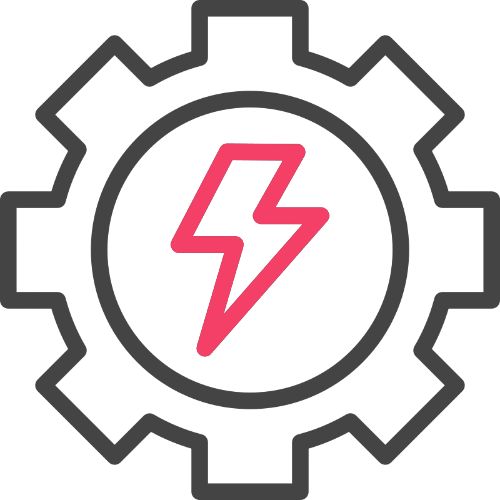
A. Real-time energy monitoring and analytics
IoT-powered energy and asset management systems can provide real-time data on energy usage, helping retailers to identify energy wastage and implement energy-saving measures. These systems can track energy usage across multiple locations and provide insights into energy consumption patterns.
By analyzing this data, retailers can make informed decisions to optimize their energy usage, reduce energy costs, and minimize their carbon footprint as well.
B. Energy efficiency via automated controls
IoT-powered energy and asset management systems can automatically control several building assets, like cooling systems, refrigeration systems, lighting, and signages, to optimize energy efficiency. For example, schedule-based or sensor-based smart controls can be used to adjust the temperature of retail stores, reducing energy usage.
Automated lighting systems can turn off lights in unoccupied areas, reducing energy consumption. Refrigeration systems can be optimized to minimize energy usage while maintaining safe food temperatures. By implementing such measures, retailers can significantly reduce their energy consumption and costs.
2. Asset Management
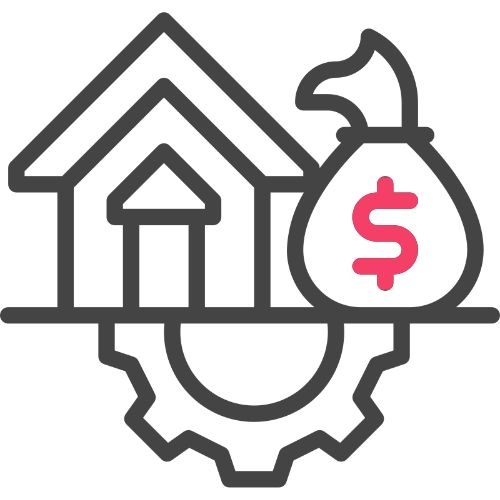
A. Remote asset management
IoT-powered energy and asset management systems can remotely monitor and manage assets across multiple locations. These advanced systems effectively track the operational status of assets and equipment, leading to enhanced energy efficiency and the prevention of unnecessary wastage.
By asset scheduling and automatically turning off equipment when not in use, they effectively minimize energy consumption and promote resource conservation.
B. Asset health monitoring
IoT-powered energy and asset management systems can monitor the health of assets in real-time, predicting and preventing asset failures. For instance, sensors can detect anomalies in equipment operations, such as changes in temperature, pressure, or vibrations, indicating a potential issue.
By detecting such issues early, retailers can take corrective action and prevent asset downtime, reducing maintenance costs and improving asset utilization.
C. Smart maintenance
IoT-powered energy and asset management systems can enable smart maintenance of assets. Predictive maintenance can be used to analyze the actual health condition of assets, predicting when maintenance is required, reducing downtime and maintenance costs.
Moreover, fault detection and diagnosis can help retailers to identify issues with assets in real-time, providing insights into the root cause of the problem, reducing the time required for maintenance and repair.
Overall, IoT-powered energy and asset management systems can significantly improve energy and asset management in retail, enabling retailers to optimize their energy consumption, reduce costs, and improve asset utilization and maintenance.
Benefits of IoT automation in retail
In recent years, the retail industry has seen a significant shift towards the use of technology to improve operations, enhance customer experience, and drive business growth. One technology that has gained particular prominence in this regard is the Internet of Things (IoT), which refers to the network of physical devices, vehicles, buildings, and other objects that are embedded with sensors, software, and connectivity to enable them to collect and exchange data.
IoT-powered energy and asset management, in particular, has emerged as a powerful tool for retailers looking to optimize their operations, reduce costs, and improve the customer experience. By using IoT sensors to monitor and control building systems such as lighting, heating, and cooling, retailers can achieve significant energy savings and improve operational efficiency.
In this context, the benefits of IoT-powered energy and asset management in the retail industry are numerous and far-reaching. From cost savings and increased operational efficiency to enhanced customer experience and better decision-making, IoT technologies have the potential to revolutionize the way retailers do business.
Here are some of the key benefits of IoT-powered energy and asset management in the retail sector:
1. Cost savings

One of the main benefits of IoT-powered energy and asset management in the retail industry is cost savings through energy efficiency. IoT sensors can monitor and control the use of electricity, heating, and cooling, and can automatically adjust settings based on occupancy and other factors. This can result in significant energy savings, which can translate into lower utility bills for the retailer.
2. Increased operational efficiency
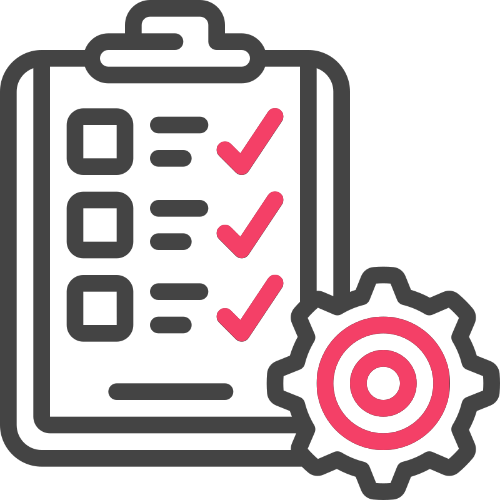
IoT-powered energy and asset management can also increase operational efficiency in a retail environment. For example, IoT sensors can monitor the status of equipment, such as refrigeration units or HVAC systems, and alert staff when maintenance is required. This can help retailers reduce downtime and improve overall efficiency.
3. Enhanced customer experience
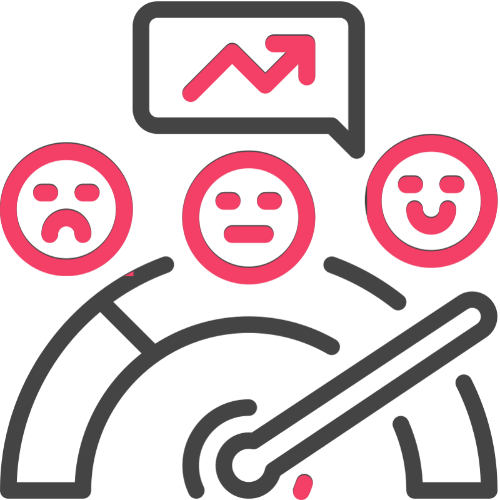
IoT-powered energy and asset management can also enhance the customer experience in retail stores by maintaining the right ambient environment for them. For example, heating & cooling systems automatically adjust with the actual heating or cooling requirements. Moreover, CO2 sensors control the store exhaust systems for maintaining proper ventilation.
4. Data driven decision making
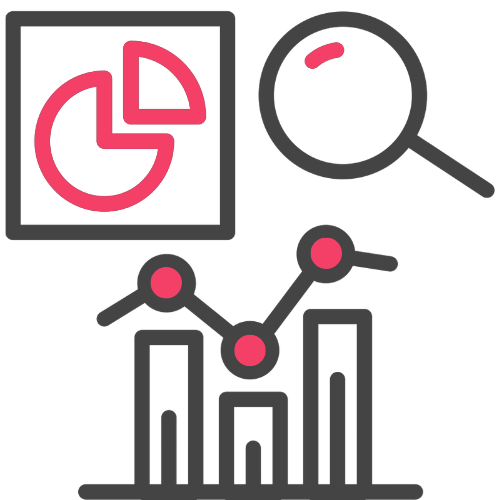
IoT-powered energy and asset management generates a wealth of data that can be used to inform better business decisions. Asset usage & energy consumption patterns allow retailers to optimize the energy and operational performance of the assets and equipment.
IoT-powered energy and asset management offers a wide range of benefits for retailers, including cost savings, increased operational efficiency, enhanced customer experience, and better decision-making through data-driven insights. By implementing IoT technologies in their stores, retailers can improve their bottom line while also providing a more seamless and personalized experience for their customers.
Implementation of IoT-powered energy and asset management in Retail
Implementing IoT-powered energy and asset management in the retail industry can be a complex and challenging process, requiring careful planning, evaluation, and execution. However, with the right approach, retailers can unlock significant benefits discussed above.
In this section, we will explore some of the key considerations and best practices for implementing IoT-powered energy and asset management in the retail industry.
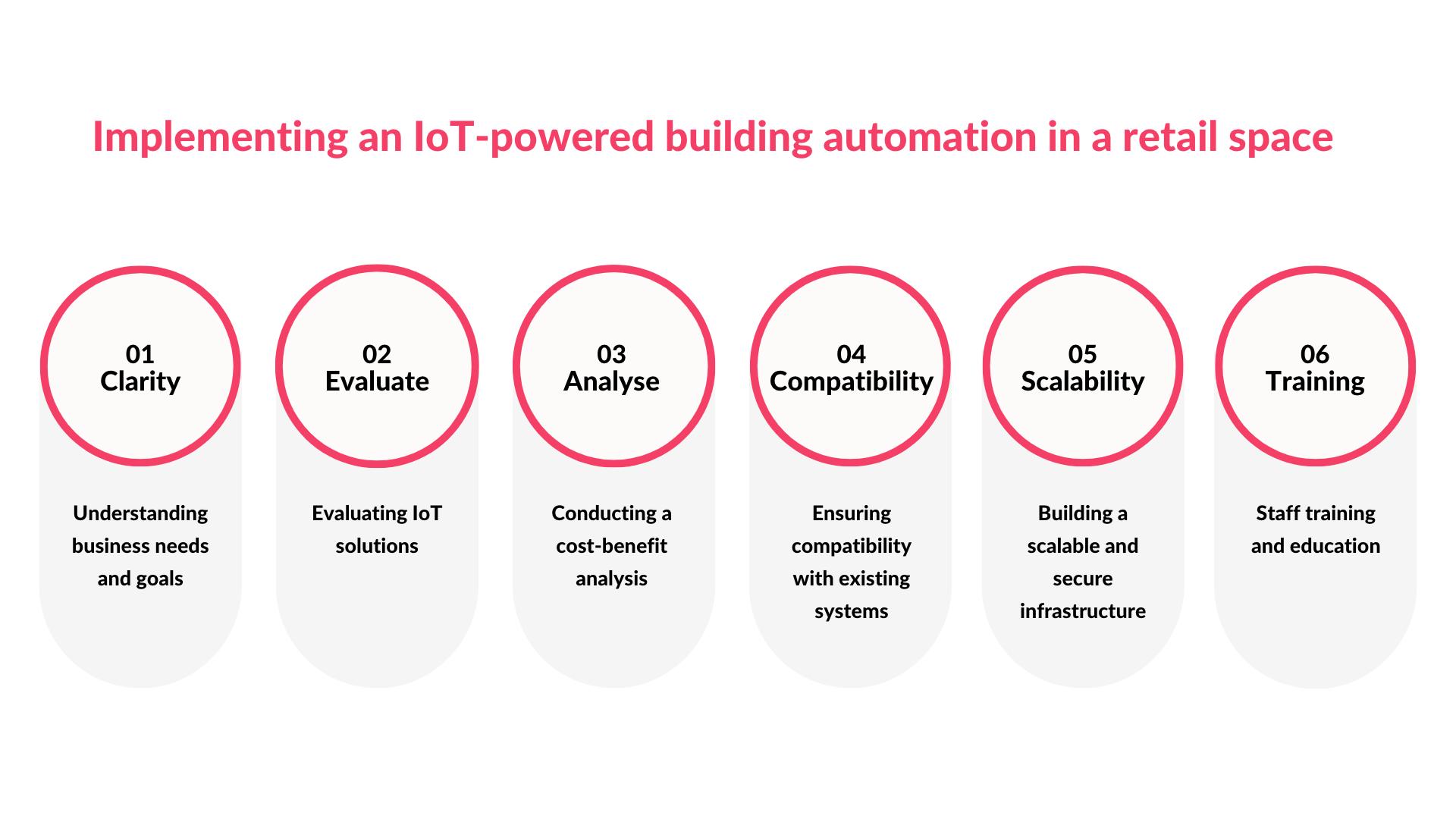
1. Understanding business needs and goals
Before implementing IoT-powered energy and asset management, it’s important for retailers to understand their specific business needs and goals. This includes identifying areas where automation can improve efficiency, reduce costs, and enhance the customer experience.
By defining clear objectives and requirements, retailers can ensure that the IoT solution they select meets their specific needs.
2. Evaluating IoT solutions
Once retailers have defined their business needs and goals, they should evaluate IoT solutions to identify the best fit for their organization. This involves considering factors such as functionality, scalability, security, and vendor reputation. Retailers should also consider factors such as ease of integration with existing systems and ongoing support and maintenance.
Check out our state-of-the-art IoT-powered energy and asset management solution for retailers
3. Conducting a cost-benefit analysis
Implementing IoT-powered energy and asset management involves up-front costs, including hardware, software, and installation expenses. To ensure a positive return on investment, retailers should conduct a thorough cost-benefit analysis that considers factors such as expected cost savings, increased efficiency, and improved customer experience. This analysis should take into account both short-term and long-term costs and benefits.
A pilot test should be conducted for such analysis. Reach out to our IoT specialists to know more about the pilot test.
4. Ensuring compatibility with existing systems
IoT-powered energy and asset management should be designed to integrate seamlessly with existing systems and processes in the retail environment. Retailers should ensure that the IoT solution is compatible with their existing hardware, software, and network infrastructure to avoid compatibility issues and minimize disruption to operations.
Read more about Retrofitting existing buildings with IoT for Sustainability & Energy Efficiency
5. Building a scalable and secure infrastructure
IoT-powered building automation involves the deployment of a large number of sensors and devices, creating a significant security risk if not properly secured. Retailers should invest in building a secure infrastructure that includes encryption, authentication, and access control to protect against cyber threats. They should also consider the scalability of their infrastructure to ensure that it can support future growth and expansion.
6. Staff training and education
Finally, retailers should ensure that their staff are trained and educated on the use of IoT-powered building automation systems. This includes training on how to use the technology, as well as how to interpret and use the data generated by the system.
Retailers should also consider creating a culture of innovation and experimentation that encourages staff to explore new ways of using IoT-powered building automation to drive business value.
Implementing IoT-powered energy and asset management in the retail industry requires careful planning, evaluation, and execution. By following best practices retailers can unlock significant benefits such as improved efficiency, cost savings, operational efficiency and enhanced customer experience.
Ultimately, the successful implementation of IoT-powered building automation can be a key factor in the long-term success of a retail organization.
Emerging Trends of IoT Automation in the Retail sector
IoT-powered building automation is rapidly transforming the retail industry, providing retailers with unprecedented levels of energy & operational efficiency, cost savings, and customer experience. As the technology continues to evolve, new trends are emerging that are driving the adoption of IoT-powered building automation in retail.
In this section, we will explore some of the key trends shaping the future of IoT-powered building automation in retail.
1. Adoption rate and growth of IoT in retail
The adoption rate of IoT-powered building automation in retail has been steadily increasing in recent years, driven by the need for retailers to improve efficiency and reduce costs. The global market for IoT in retail is growing. This growth is being fueled by the increasing availability of low-cost IoT sensors and devices, as well as advances in cloud computing and big data analytics.
2. Integration of AI and Machine Learning
AI and machine learning are increasingly being integrated into IoT-powered building automation solutions in retail. By using AI and machine learning algorithms to analyze data from IoT sensors, retailers can gain valuable insights into asset health, customer comfort compliances, energy consumption, etc.
AI and machine learning can also help retailers optimize building systems, such as lighting and heating, to improve efficiency and reduce energy costs.
3. Emphasis on data privacy and security
With the increasing use of IoT devices and sensors in retail, there is a growing emphasis on data privacy and security. Retailers are investing in secure IoT solutions that protect data and prevent cyber attacks. They are also adopting best practices such as encryption, authentication, and access control to safeguard against security breaches.
4. Greater use of cloud based IoT solutions
Cloud-based IoT solutions are becoming increasingly popular in retail, as they offer a range of benefits such as scalability, flexibility, and cost-effectiveness. Cloud-based solutions also allow retailers to easily integrate and manage IoT devices and sensors, and to access real-time data from anywhere, at any time.
Check out ZenConnect, cloud-based IoT-powered energy and asset management solution for retail
5. Increased focus on sustainability and energy efficiency
As sustainability becomes a key focus for retailers, there is a growing emphasis on using IoT-powered energy and asset management to reduce energy consumption and promote sustainability. By using IoT sensors to optimize building systems such as lighting and heating, retailers can significantly reduce their energy costs and carbon footprint.
The future of IoT-powered energy and asset management in retail is bright, with new trends emerging that are driving innovation and growth. By adopting the latest trends retailers can stay ahead of the curve and achieve significant benefits such as improved efficiency, cost savings, and enhanced customer experience.
Summing-up
In conclusion, IoT-powered energy and asset management has revolutionized the retail industry, enabling retailers to enhance customer experiences, improve operational efficiency, reduce energy consumption, and save costs. Through real-time energy monitoring, remote asset management, and predictive maintenance, retailers can streamline their operations, boost their bottom line, and contribute to a sustainable future.
Furthermore, the integration of AI and machine learning, cloud-based solutions, and advanced IoT devices and sensors has transformed the retail landscape, providing unprecedented insights into assets & equipment performance.
As the adoption rate of IoT in retail continues to grow, retailers must prioritize data privacy and security, ensuring that their systems are scalable, secure, and compatible with existing infrastructure. By investing in staff training and education, retailers can maximize the benefits of IoT automation, empowering their employees to leverage data-driven insights and make informed decisions.
Ultimately, IoT-powered energy and asset management is a game-changer for the retail industry, providing new opportunities for growth, innovation, and success.
Get in touch with our IoT specialists to learn more about IoT-powered energy and asset management solutions for your retail business and improve your bottom line.
